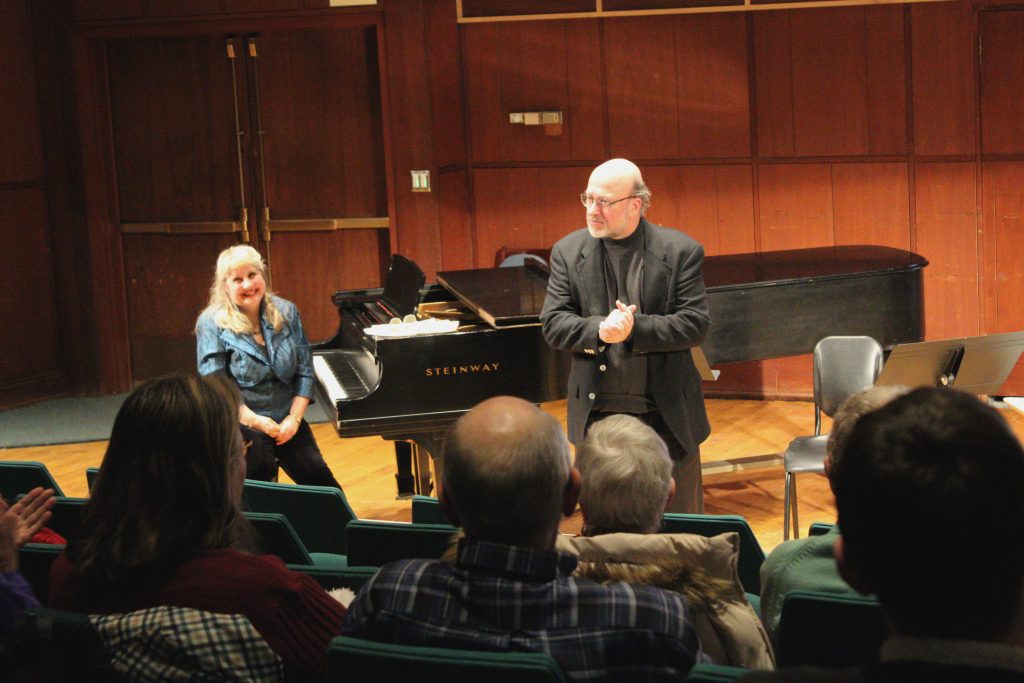
The history and innovation of the clarinet was explored through a concert in the Casadesus Recital Hall at the Anderson Center on Tuesday. “Unlocking the Muse: Music Marries Engineering 1780-1830,” was run by Timothy Perry, Binghamton University music professor and director of BU’s University Symphony and chamber orchestras.
Perry began the recital with the quote, “Every age interprets history through its own eyes, and that view is constantly changing … each stage of the instrument’s evolution represents an instrument closely and expertly adapted to the musical performance of its age.”
The quote was attributed to “The Eloquent Oboe: A History of the Hautboy from 1640 to 1760,” a book by Bruce Haynes, and it helped to establish the theme of the night. By learning about one object, we can learn more about the time it existed in, and how that object changed over time reflects how the world changes over time.
In this case, that object is the clarinet — specifically, six clarinets — which Perry had assembled to be presented, talked about and played.
The clarinets are all from different musical eras, ranging from the first age of the clarinet in 1700-1760, all the way to the fourth age of the clarinet, which spans from 1840 to today. Each had a unique style and structure, with lengths ranging between 1 and 2 feet, and a wide variety of materials used, including cherrywood, boxwood and ivory. Each clarinet was joined with an explanation of the era it was created in, and how that time period helped shape the aspects of the clarinets. After explaining the history for each clarinet, Perry would then perform a short piece on every instrument, accompanied by lecturer Margaret Reitz on the piano.
Delivering a performance on decades-old, obsolete clarinets proved to be a challenge.
“You will hear some dreadfully off-tune playing,” Perry said. “Pitch was not standardized in any of these periods until really the last clarinet you will hear.” Despite the difficulty of using an antique instrument, Perry succeeded in playing several tunes across a number of clarinets, ranging in artists from Johann Stamitz to Wolfgang Mozart to Camille Saint-Saëns.
Each clarinet was unique and required a different style to play. Perry was able to play everything from the archaic chalumeau, with only two keys, to the modern clarinet, with 18 keys.
Through not only his words, but also his playing, the audience could experience the evolution of the clarinet firsthand and how its performance changed over time. Not only did the event offer a new perspective on the modern clarinet and the state of music today in general, but it also showed a greater appreciation of music from the past, as well as what we gained and lost in the evolution of these instruments.
“One of the unintended consequences of the success of music is that almost every wood that we use to make musical instruments is either extinct or in danger of becoming extinct,” Perry said.


